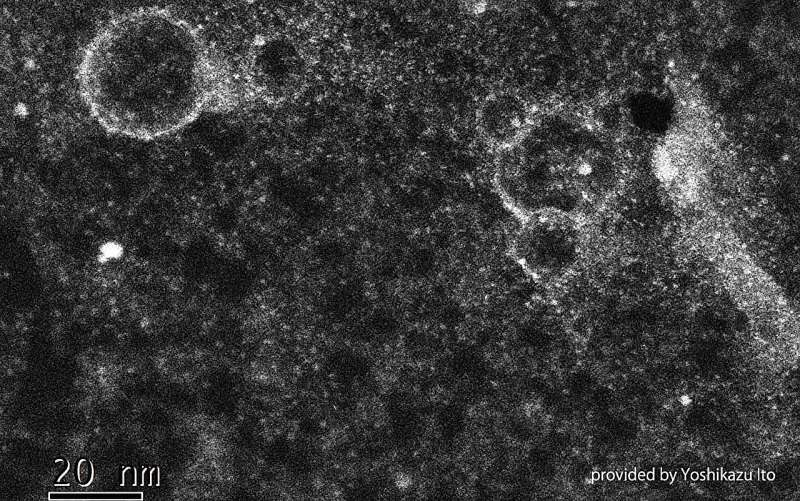This article has been reviewed according to Science X's editorial process and policies. Editors have highlighted the following attributes while ensuring the content's credibility:
fact-checked
peer-reviewed publication
trusted source
proofread
Efficient fuel-molecule sieving using graphene

A research team led by the University of Tsukuba has successfully developed a new method that can prevent the crossover of large fuel molecules and suppress the degradation of electrodes in advanced fuel cell technology using methanol or formic acid.
The successful sieving of the fuel molecules is achieved via selective proton transfers due to steric hindrance on holey graphene sheets that have chemical functionalization and act as proton-exchange membranes.
For realizing carbon neutrality, the demand for the development of direct methanol/formic acid-fuel cell technology has been increasing. In this technology, methanol or formic acid is used as an e-fuel for generating electricity.
The fuel cells generate electricity via proton transfer; however, conventional proton-exchange membranes suffer from the "crossover phenomenon," where the fuel molecules are also transferred between anodes and cathodes. Thereafter, the fuel molecules are unnecessarily oxidized and the electrodes are deactivated.
In a study, published in Advanced Science, researchers developed a new proton-exchange membrane comprising graphene sheets with 5–10 nm-diameter holes, which are chemically modified with sulfanilic functional groups affording sulfo groups around the holes.
Owing to steric hindrance by the functional groups, the graphene membrane successfully suppresses the crossover phenomenon by blocking the penetration of the fuel molecules while maintaining high proton conductivity, maybe for the first time, according to the researchers.
To date, conventional approaches for inhibiting fuel-molecule migration involved an increase of the membrane thickness or sandwiching two-dimensional materials, which in turn reduced the proton conductivity.
In this study, the researchers investigated structures that inhibit the migration of fuel molecules through electro-osmotic drag and steric hindrance. Consequently, they found that the sulfanilic-functionalized graphene membrane can remarkably suppress electrode degradation compared with the commercially-available Nafion membranes while maintaining the proton conductivity required for fuel cells.
Furthermore, simply pasting the graphene membrane onto a conventional proton-exchange membrane can suppress the crossover phenomenon. Thus, this study contributes to the development of advanced fuel cells as a new alternative for hydrogen-type fuel cells.
More information: Samuel Jeong et al, Suppression of Methanol and Formate Crossover through Sulfanilic‐Functionalized Holey Graphene as Proton Exchange Membranes, Advanced Science (2023). DOI: 10.1002/advs.202304082
Journal information: Advanced Science
Provided by University of Tsukuba





















